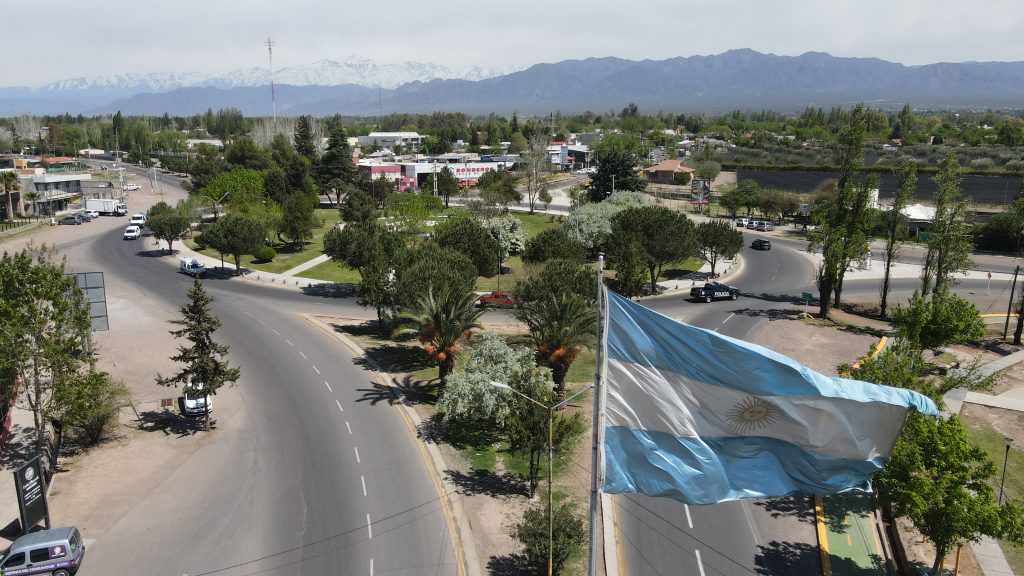Luján de Cuyo, Argentina
Bajo Luján’s Journey to New Housing.
Project Type:
Community Engagement, Environment, Equity, Health and Wellbeing, Infrastructure, Public Safety, Technology, Transportation
At a Glance
Relocated more than 1200 families who lived in flood-prone areas.
Created a workforce development initiative that employed residents, renovated public land and expanded access to recycling centers.
Improved access to territorial data, which made getting land permit data faster—going from months of waiting to just three clicks. The platform, Luján 3D, allows renovations and housing development to have substantial improvements.
Improved accessibility for residents with disabilities through an adapted bicycle program.
In 2016, a survey conducted by the city of Luján de Cuyo, Argentina, revealed a heartbreaking reality. There were about 3,500 families who lived in marginal or informal neighborhoods, of which 700 were concentrated in the Bajo Luján area, often without basic services. The most vulnerable residents lived near a flood-prone river, underscoring the urgency for change. As a result, the City developed an ambitious urbanization and relocation project, supported by the World Bank.
At the heart of the initiative was a resident-driven approach. Residents were surveyed to identify and prioritize needs, including proximity to employment, family size, and level of need to minimize disruption to their daily lives. Efforts to monitor the impact of this relocation were key. A survey and audit process was initiated, capturing residents’ experiences before, during and after the move. This data was visualized through PowerBI dashboards, allowing real-time tracking of project progress.
“Governing is making decisions. Doing it well requires exceptional use of data. If we intend to achieve real impact in the community, our public policies must be data-driven. We dream of becoming an international example of well-managed local government.”
The result was the construction of 700 homes in 11 neighborhoods.
This enormous initiative not only provided new homes, but restored a sense of human dignity and trust in government for those who had long been marginalized.
Seven hundred safe and practical homes is a significant achievement.
Additionally, the community intervened and regularized other settlements benefiting 500 families, completing a very ambitious stage that managed to reach more than 35% of the most vulnerable sector of the City.

But the government did not stop there. City leaders knew that housing is only one part of poverty. Thus, in an effort to create employment opportunities, the city turned its attention to residents who worked at the landfills as urban recyclers.
These families made a living collecting recyclable materials from garbage dumps. To help them, the following public policies were promoted: Closure and remediation of garbage dumps, Social inclusion of urban reclaimers, Inclusive Recycling Program – Centro Verde. In this way, the city, together with a group of neighbors, mainly women, officially formed a cooperative. The City provided land and necessary infrastructure.
The Fortress of My Earth, which now has nearly 30 members, launched a program that uses geographic information system (GIS) data to strategically place recycling bins throughout the city. This project successfully increased the number of Green Dots from 8 to 65, ensuring that residents could easily find a container within 500 meters of their homes. This caused a notable increase in recycling from 2021 to 2023.

The story doesn’t end there. In 2021, the City cut the ribbon on Luján Park, located in the previously abandoned housing settlement Bajo Luján. The area has been transformed into a lively community space, with children’s play areas with equipment made from recycled plastic from the cooperative.
The Bajo Luján and Centro Verde projects reveal how intertwined initiatives can have an exponential impact on residents’ lives. They boosted citywide sustainability, helping hundreds of Luján de Cuyo residents achieve housing stability and financial independence and building much-needed trust in local government.